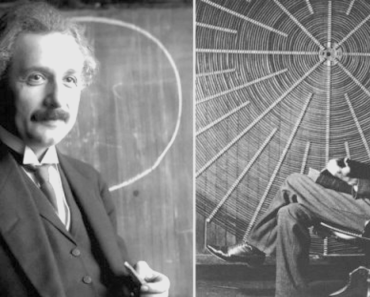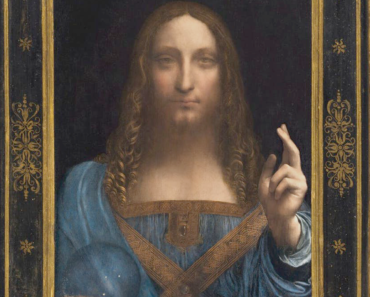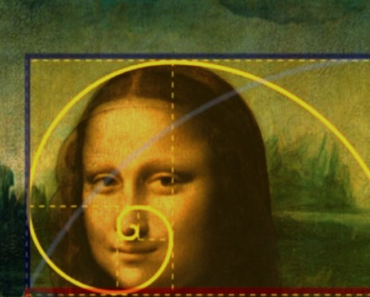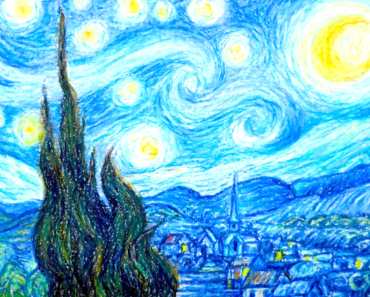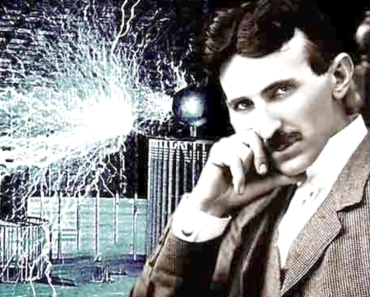The painting “The Last Supper”, by the Italian artist Leonardo da Vinci, is one of the most famous works of art in history, painted between 1495 and 1498 for the benefit of the Dominican monastery Santa Maria delle Grazie in Milan.
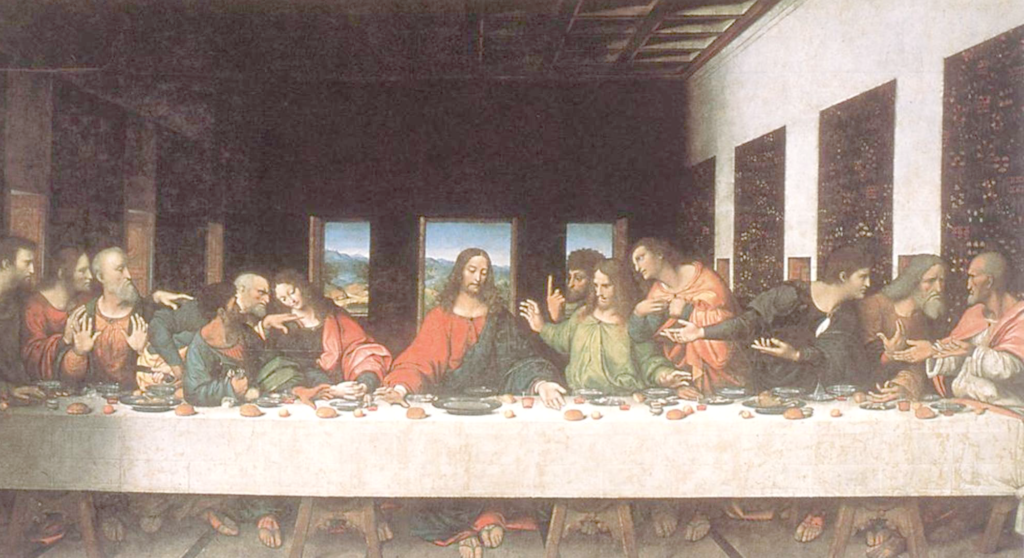
The painting depicts a dramatic scene mentioned in all four Gospels, including the Gospel of Matthew, as the Lord Jesus gathered his disciples, announcing at his last supper that one of the apostles would betray him, referring to Judas, adding that he knew what would do it. come from his arrest and execution, and we can see who Through facial expressions and gestures, how each of Christ’s twelve disciples responded to the news. Despite the genius of the scene that Da Vinci depicted during this important period in the life of Christ, this painting that dazzled the world contained dozens of facts and secrets, so he deconstructed his tales through time, and we let’s mention in the following lines the most important thing that happened there.
- 1 The face of Christ and the face of Judas in the painting by Da Vinci
There is a strange story told about “The Last Supper” painting, and no one knows its authenticity. It is said that the famous Italian artist Leonardo da Vinci painted the faces of the Twelve Apostles and the face of Christ through live models, which represented the characters in the painting, and the man who played the role of Christ was chosen in first; Thus, da Vinci chose this man from among the hundreds of young people who offered him, and the Italian artist had special requirements for the face of the character who will play the role of Christ in his painting.
Da Vinci wanted the face of the character who would represent Christ to be innocent, beautiful and the features of a saint who knows no sin. After weeks of relentless research, he found his way to a 19-year-old man, and for six months this young man worked as a vivid example of the character of Christ who appeared in the mural “The Last Supper”. paintings which were later copied from it except that the real story begins with the character of Judah, as over the course of six years the artist completed one of the characters of the apostles one by one until he reached the choice of who would play the role of Judas, who sold Jesus for 30 pieces of silver, and his betrayal caused the end of Christ’s Crucifixion.
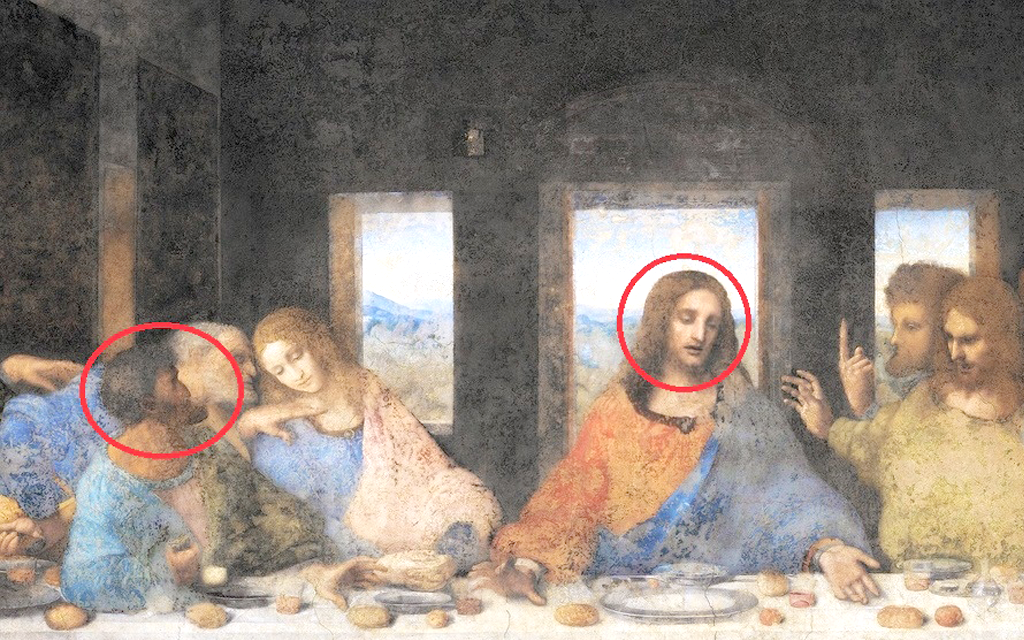
The face of Judas was Da Vinci’s last mission, to complete his masterpiece, and for that he wanted a man with a harsh face, whose features and wrinkles were sculpted by cheating and hypocrisy, and in her blood the crime was born, a face that would express a character who could betray her best friend, and after many frustrating experiences in researching On the authority of the owner of this face, one of them sent Da Vinci telling him that what he was looking for was in a cell in Rome, a man sentenced to death following a life full of crimes and murders, at which time the Italian artist made a trip to the city of Rome, and was able to bring the man out of the darkness of his cell in the sun, Here Da Vinci found before him a dark souled man, dark in color and his long disheveled hair touching his face, and he saw in him the kind of pure evil he needed to complete his painting.
Da Vinci sent special permission from the king to transport this prisoner from Rome to Milan, and for several months this man awaiting death represented the figure of Judas, which appeared at the end on the fresco by Vinci and the paintings that have been copied from it. After Da Vinci finished his painting, he summoned the guards to take the prisoner to his death, and here the prisoner panicked and got out of their control, returning to Da Vinci, telling him, “Don’t you know who I am? Da Vinci said to him: “I did not see you in my life until I left a cell in Rome. The crying man begged him to look at him again and try to get to know him, and when Da Vinci refused, the man told him, “I am the man I drew seven years ago. , and he personified the character of Christ. “
- 2 Was Mary Magdalene present at the “Last Supper”?
The painting “The Last Supper” was one of the masterpieces of the Renaissance. However, like many of the works of Italian artist Leonardo da Vinci, he has been accused of mystery, and controversial myths have developed around him. The first was to speculate that the beloved disciple, seated to the left of Christ, is not the apostle John, but Mary Magdalene. Was Magdalene present at Christ’s Last Supper?
In the painting that embodies a few seconds after Christ announced that one of the apostles would betray him before sunrise, we can see with our own eyes the interaction of his disciples with current events, in small groups. of three people who divided his twelve disciples. , and their reactions ranged from shock, horror, and anger. The first group included Bartholomew, Andrew and Jacob bin Zebdi, on the far left of the painting, with terror and panic painted their features, followed by the second group, which includes Judas, Peter and John. As for his betrayal, John with the “female face” was on the verge of fainting. Christ is seated in the middle and to his right are two other groups who appear astonished and angry.
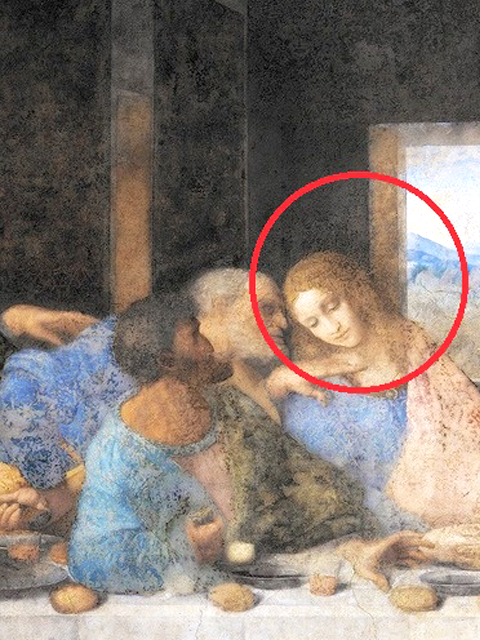
On the left side of the painting, the beloved disciple of Christ is seated beside his right arm, and art historians throughout the ages have believed him to be the apostle John, but this person sitting at side of his right arm is not easily recognized by his type. His figure appears somewhat “feminine”, and we cannot visually link it to masculinity, so some argue that this person cannot be John, and that he is Mary Magdalene, as did the novelist Dan Brown.
- 3 Hidden Letter from Da Vinci
The Last Supper has several copies that fill museums. However, the original painting is a huge fresco that covers the entire wall of the dining room inside the Monastery of Santa Maria. It measures 8.8 meters by 4.6 meters. Where the head of Christ is.
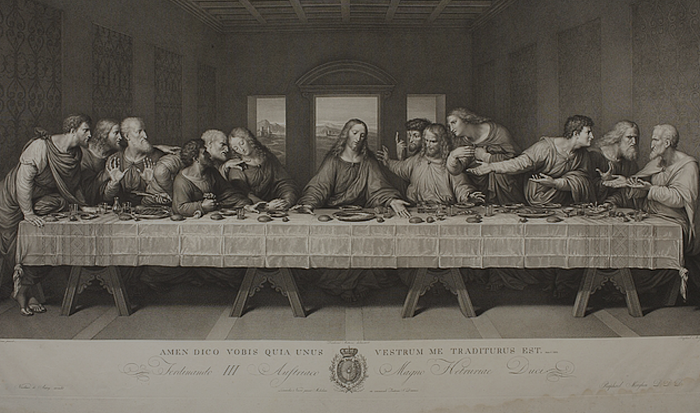
Da Vinci’s painting was not the first to represent the Last Supper; As the theme of the painting has been painted dozens of times to decorate the walls of churches and monasteries, and the painters chose the Last Supper at that time the time to break bread, which refers to the ‘body “, And the wine in reference to the” blood of Christ “, to express this important event, However, when the Duke of Milan chose it for the painting, da Vinci chose another moment, more confusing and terrifying, which was when a traitor was revealed at the table, and the emotions that followed.
And all the available copies of this painting, whether before or after Da Vinci, were distinguished by the presence of a halo around the heads of Christ and the apostles, which is the aura accompanying the apostles and saints, but the da Vinci version was the only copy in which the artist ignored the position of this aura, which symbolizes immortality. Art historians analyze this event as an indication that Christ’s apostles were human beings and ordinary people, and that even Christ himself has passed away.
Mario Tadei, an expert in the art of Leonardo da Vinci’s works, says about this: “I think Da Vinci dropped the auras around the heads of Christ and the saints, because he wanted to send us a message that the thirteen men at the dining table are human beings and ordinary, simple people, there is no supernatural being inside the Last Supper, and from there springs their power. ”
- 4 the musical track “The Last Supper”.
In 2007, an Italian musician claimed to have discovered coded musical notes inside Leonardo da Vinci’s painting The Last Supper, indicating the possibility that da Vinci, the genius of the Renaissance, left behind a musical background to accompany the moving scene he depicts in the painting.
Musician Giovanni Maria Balla recounts his discovery: “It seemed like a sacred secret, as if Da Vinci had left behind the soundtrack that embodies the passion of Christ.” Pala, 45, notes that he began studying Da Vinci’s painting in 2003, after hearing in a newscast about researchers speculating that there was a musical note hidden inside the panel. Last Supper, no one looked for more than that, adding, “I wanted to dig deeper into the secrets of this case.”
Years later, Pala was able to write a book explaining how he was able to decipher this musical note, explaining the positions of the symbols of Christian theology. And he adds that there is a symbolic relationship between the bread, which represents the “body of Christ”, and the hands of the apostles who blessed the food, and here Pala was able to read the musical symbols from right to left, just like Da Vinci used to write, and he was able to find signs and symbols. Others indicate the slow rhythm and duration of each musical symbol, until he finally reached “the hymn”. of the Lord ”, and its duration is about 40 seconds.
- 5 is the date of the end of the world written inside the table?
Leonardo da Vinci is considered one of the most brilliant human spirits of all time, and his Last Supper is the most reproduced religious painting of all time, but the surprises in this mural are endless; There may be another coded message revealing the true end of the world date as Da Vinci saw it.
The researchers indicate that the Italian artist paid great attention to highlighting the number “three”; As he painted three windows behind the head of Christ, and was interested in dividing the Twelve Apostles into groups, each made up of three individuals, was Da Vinci just focusing on the Holy Trinity, or was it more far?
Researcher Sabrina Sforza Galicia says there is a real code for Da Vinci, except it’s not the one written by novelist Dan Brown in his fictional novel; Galicia studied the Last Supper tapestry that da Vinci had prepared for Louis XIII, King of France at the time, on which he based his large fresco in Milan.
The researcher explained the Da Vinci Code, which includes the astrological signs of the twelve constellations, and also used the twenty-four letters of the Latin alphabet, to represent the number of hours in the day, and the researcher claimed that ‘she was able to decipher this mystery, indicating that Da Vinci predicted the end of the world on The Path of These Symbols, through a planetary deluge that begins on March 21, 4006, and ends on November 1 of the same year.

